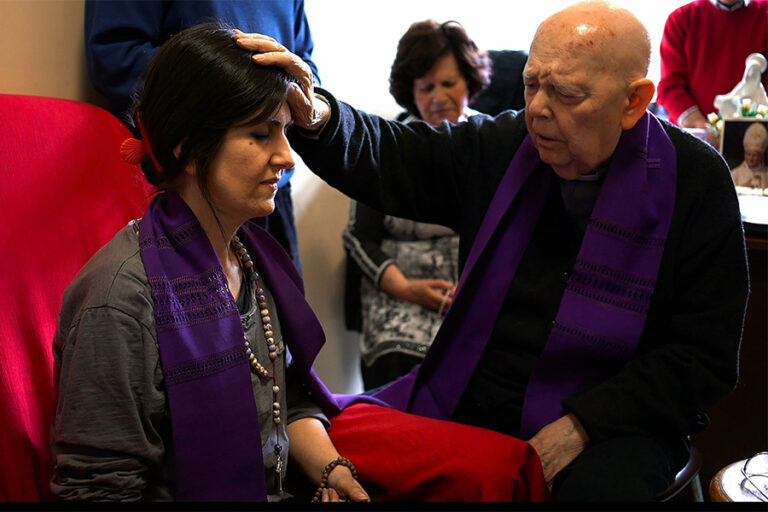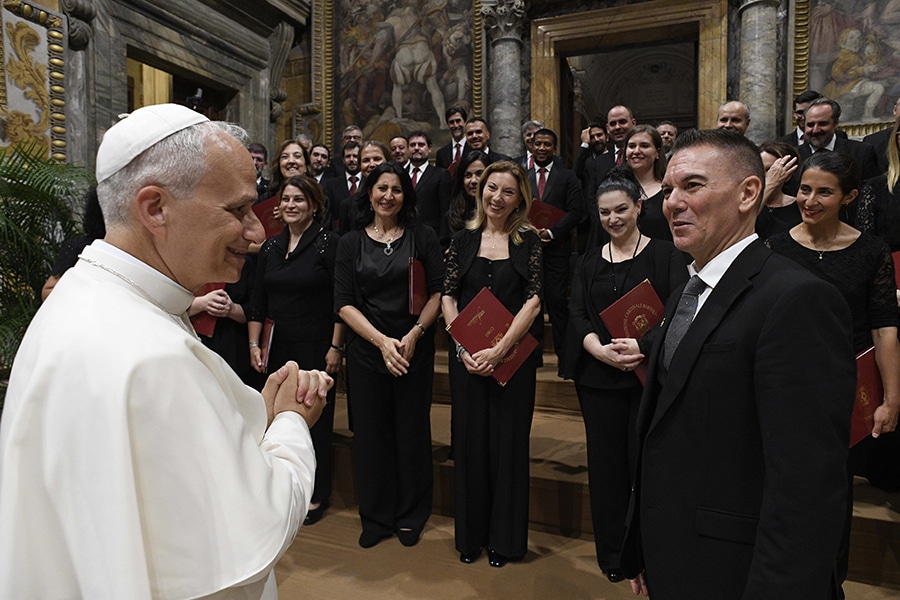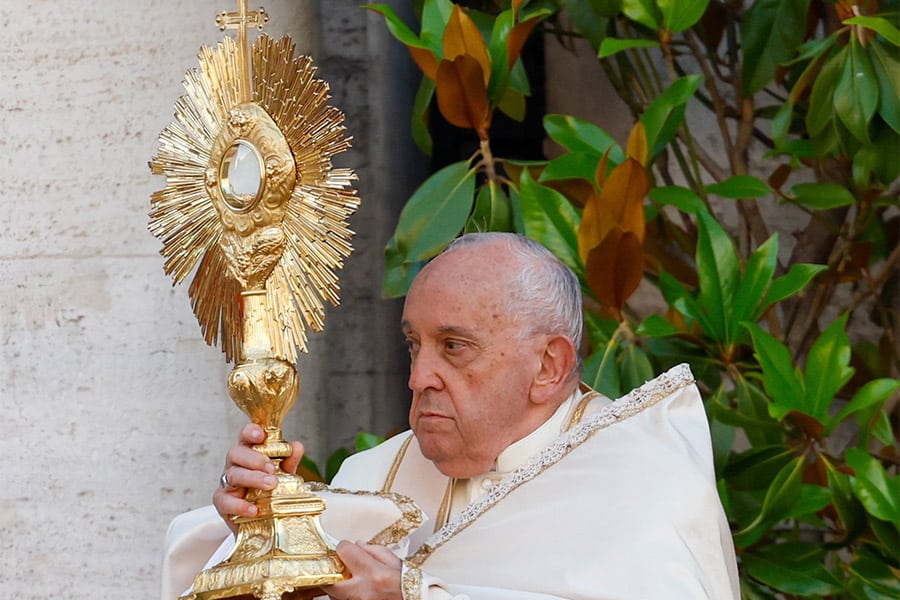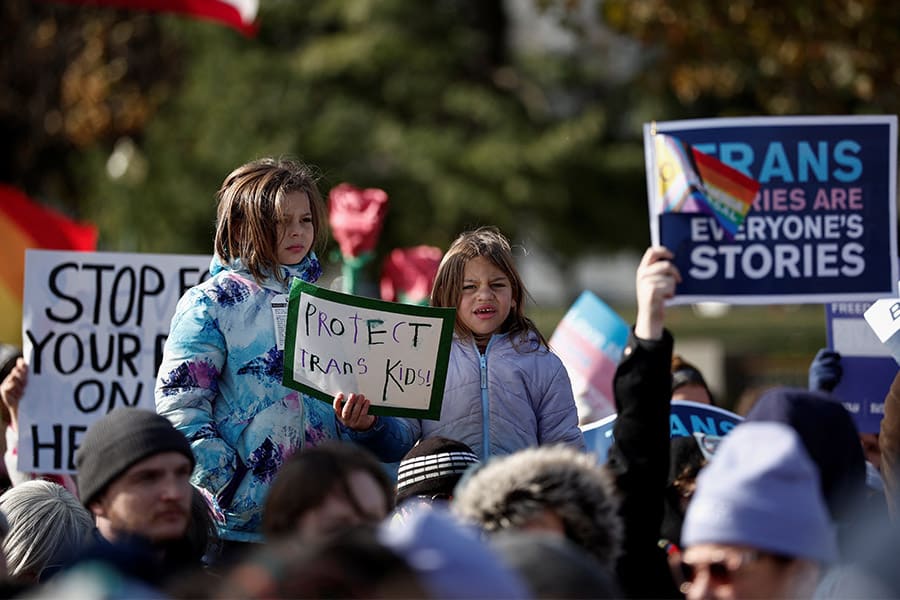When she died on the basement floor of a tiny San Jose, Calif., Pentecostal house church Sept. 24, 2021, the relatives of 3-year-old Arely Naomi Proctor Hernandez — her mother, uncle and grandfather — were convinced they were trying to save her.
The toddler’s death wasn’t, however, caused by an unexpected medical emergency, and her relatives weren’t frantically rendering first aid.
They later told authorities they were performing a ceremony to “liberate her from evil spirits” — in other words, an exorcism.
The trio — currently being held without bail in a Santa Clara County jail, charged with felony assault on a child younger than eight causing death — face the prospect of standing trial, following a lengthy and recently concluded preliminary hearing. If convicted, each could be sentenced to 25 years to life in prison.
While Arely’s death by exorcism might seem like a rare combination of the bizarre and tragic, it nonetheless raises a question pertinent to Catholics: What should the faithful do if they, or others in their circle, suspect the presence of the demonic?
“I’m trained to be a skeptic,” said Father Vincent Lampert, exorcist since 2005 for the Archdiocese of Indianapolis, pastor of two Brookville, Ind., Catholic parishes, and author of “Exorcism: The Battle Against Satan and His Demons” (Emmaus Road). “Most people who contact me are convinced they’re dealing with the demonic. But I always say, I have to come to that conclusion; I have to reach moral certitude — meaning beyond a doubt, this is truly extraordinary demonic activity.”
Father Lampert, who estimates more than 300 U.S. priests are trained as exorcists, said that most U.S. dioceses have established exorcism protocols.
And as with physical illness, he said, one consults a generalist before a specialist.
“People should go see their parish priest first. They shouldn’t say they’re possessed, because you might get a negative reaction,” advised Father Lampert. “They should just go to the priest and say, ‘I’m having some spiritual issues going on in my life — and I’m coming to you seeking guidance on how to sort all of this out.’ But when people self-diagnose, my experience is phone calls are not returned, emails are deleted — and people are kind of just shunned.”
Additionally, “a person does need to have a psychiatric evaluation, and a physical examination,” Father Lampert stressed. “Obviously, if somebody contacts me, that person is suffering. Now the question is, are they suffering spiritually? Are they suffering mentally? Are they suffering physically?”
Cases of actual demonic possession, emphasized Father Lampert, are rare.
Instead, the majority of demonic activity Father Lampert confronts consists of infestation (the presence of evil in a location, object, or animal); demonic vexation (physical attacks); and demonic obsession (mental attacks).
Father Lampert, who trained as an exorcist in Rome with a Franciscan priest, estimated he receives some 3,500 requests a year for assistance. Requests for his help originate from all over the U.S., and around the world.
“But full cases of possession itself — they’re maybe one case a year,” he said. “People shouldn’t believe that somehow this is the norm.”
A 2023 Gallup poll revealed 58 percent of Americans believe in the devil, compared to 70 percent in 2007, and 55 percent in 1990.
“If a Catholic wants to take the position that the devil is not real,” observed Adam Blai — a psychological expert for the Diocese of Pittsburgh, and a church-decreed expert in religious demonology and exorcism — “you have to reject the following: the Old and New Testament, the seven Gospel accounts of exorcisms Jesus performed, the direct command Jesus made to his church to cast out demons, the church fathers, the saints, the magisterium, the catechism and the popes.”
“Is one,” Blai asked, “still a Catholic, or even a Christian, if one rejects all of these?”
Catholic protocols and training — the Pope Leo XIII Institute at the University of St. Mary of the Lake in Mundelein, Ill., has trained exorcists and their teams for over a decade — are meant to avoid possible harm. In tragic circumstances such as Arely’s, “it is usually family members and misguided religious leaders without enough understanding of the medical and psychological possibilities in a case,” Blai said.
“Many things are mistaken for possession,” he noted, including “schizophrenia, drug-induced psychosis, some forms of epilepsy, dementia-based psychosis, etc.”
“I suspect that these tragic cases of people doing their own version of an ‘exorcism’ have skipped the proper evaluation of the medical possibilities and treatments associated with those potential causes of the person’s difficulties,” suggested Blai, who traces the evolution of the rite in “The History of Exorcism” (Sophia Institute Press).
“I suspect that people resort to these practices,” he said, “because they have not been properly trained and their religious denomination has not developed policies and procedures for working on these cases.”
Kathleen Beckman, author of “A Family Guide to Spiritual Warfare” (Sophia Institute Press) and administrator of a diocesan exorcism and deliverance ministry, said popular media can also play a role in public perception of the demonic.
“Some people can become obsessed with the subject of spiritual warfare especially through inordinate consumption of media and literature related to demonology. We must be careful of autosuggestion,” Beckman emphasized. “The major rite of exorcism is reserved for those whom the church has discerned to be demonically possessed. Relatively few people require such extraordinary intervention.”
“However, a good number of people do benefit from deliverance prayers that can be considered ‘minor exorcism’ as part of their reconciliation with God and church, coupled with sacraments and sacramentals,” she added. “Such prayers can be offered by all priests.”
Beckman — who served on the Pope Leo XIII Institute faculty for six years and graduated in 2017 from the Association of International Exorcists course at Rome’s Pontifical Regina Apostolorum University — echoed Blai in respect to appropriate restraint.
“The faithful should be cautioned about submitting themselves to ‘do-it-yourself’ exorcists outside of the church, and/or seeking help from ‘so-called’ healers who use occult, or magical arts,” Beckman emphasized.
“In my 16 years’ experience in the ministry of exorcism, there is increasing clergy awareness of the pastoral need,” said Beckman. “Many dioceses have established protocols to assist the faithful. Whether the diocese holds their protocol privately or publicly, the faithful can usually find help through their pastor or diocesan center/chancery.”
Blai cautioned that “the local priest may or may not be well-educated on these matters, and he may not know who the specialists in the diocese are. Each diocese sets up their own program in their own way, so there is no one universal answer to this.”
If a parish priest is skeptical or dismissive, Father Lampert suggests asking, “Can you refer me to a priest in the diocese who may be well-versed in these matters, who can give me the counseling that I’m seeking?”
An increasingly secularized society has further complicated matters.
“I think casting the devil out is the easy part,” Father Lampert said. “The harder part is to convince somebody to invite God in. We’re living in a world today where faith is in decline.”
That decline, he explained, leads those dealing with the demonic to regard the exorcist as more of a magician than Jesus Christ’s instrument of healing.
“I’ve had people tell me, ‘I want the evil to go away, but I don’t want anything to do with God,'” Father Lampert reflected. “Which is kind of a crazy statement.”
Ultimately, “It is not useful or healthy to focus one’s spiritual life and thought on the demonic,” said Blai. “Know enough to avoid the traps of the enemy, but always focus on Jesus and your journey ever closer to God.”
Father Lampert agreed.
“As Catholics I would say if we’re doing five things, we don’t have to worry about the devil: If we’re going to Mass; we’re praying; reading the Bible; celebrating the sacramental life of the church; if we know and are living out our faith — the devil’s already on the run,” Father Lampert counseled. “We don’t have to do anything extraordinary to defeat the devil; it’s the ordinary aspects of our faith that will always keep the devil at bay.”
Read More World News
Copyright © 2024 OSV News








